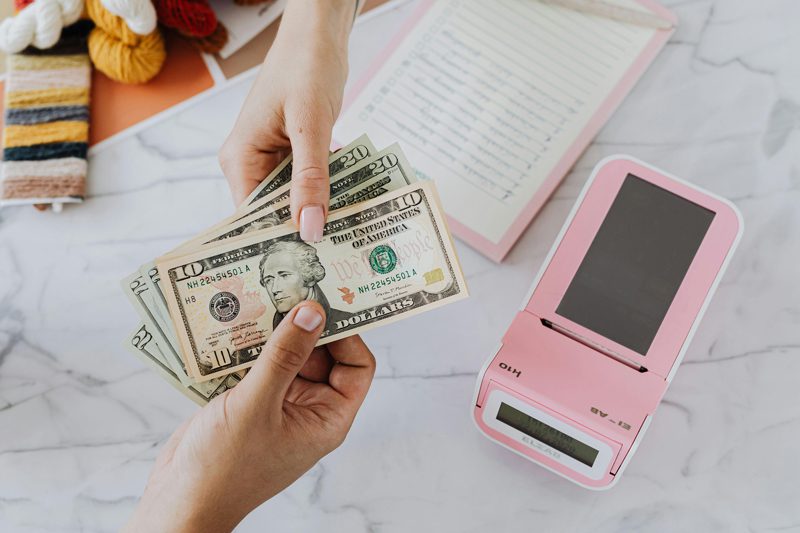In our fast-paced consumer culture, the temptation to buy things on a whim is ever-present. From the endless allure of online shopping to those strategically placed items on store shelves, knowing how to stop impulse buying is a critical skill. And it’s so easy to give in.
Impulse buying isn’t a harmless habit. It can have significant repercussions on your personal finances, leading to unnecessary debt and hindering your savings goals. If this hits a little too close to home, that’s okay; with a little planning, you can curb the urge to make spontaneous purchases and take control of your spending habits once and for all.
Let’s explore how to stop impulse buying and foster a more mindful approach to spending.
What Is Impulse Buying?
Impulse buying is an unplanned, snap decision to buy something without much—or any—forethought. And, it’s something most of us are guilty of. According to a Slickdeals survey, 73% of respondents admitted that most of their purchases were spontaneous, with the average person impulsively spending $314 per month.
Impulse shopping is driven by emotional response rather than logical decision-making, leading to random and often unnecessary purchases. Think; that candy bar at the checkout counter, or that flashy gadget you just couldn’t resist. It’s an itch that needs immediate scratching, often driven by feelings of excitement, desire, or fear of missing out (FOMO).
While impulse shopping provides a shot of instant gratification, this habit can have long-term financial consequences, busting your budget and racking up unnecessary spending.
Why Is Impulse Buying So Damaging to Your Savings?
What makes impulse buying so damaging to your savings is its unplanned nature. These purchases can disrupt a well-structured budget, leading to a nasty cycle of overspending and diverting money from building your emergency fund or finishing off your debt repayment plans. What’s more, the instant gratification you feel from making an impulse buy is fleeting; the financial repercussions, on the other hand, can be long-lasting.

How to Stop Impulse Buying: 14 Tips
- Set Clear Financial Goals
- Create a Budget and Stick to It
- Wait Before You Buy
- Limit Exposure to Temptations
- Use Cash Instead of Cards
- Track Your Spending
- Identify Your Triggers
- Always Shop With a List
- Avoid “Retail Therapy”
- Consider the Cost in Work Hours
- Uninstall Shopping Apps
- Reward Yourself for Not Impulse Buying
- Reflect on Past Impulse Purchases
- Get Support
1. Set Clear Financial Goals
Setting specific financial goals is a powerful deterrent against impulse buying. When you have a clear understanding of what you need your money to do for you—such as pay for a house, fund your retirement, or whittle down debt—each potential impulse purchase can be weighed against these goals. Ask yourself, “Is the momentary satisfaction worth the financial setback?” “If I borrow money, will I just be continuing the cycle of debt?” This reflection can help curb the desire to spend impulsively.
2. Create a Budget and Stick to It
It’s a budgeting myth that budgets are only for people struggling with money. That said, a well-structured budget is fundamental in managing personal finances—including your fun funds. Use your budget to clearly allocate what you’re allowed to spend each month on leisure and non-necessities. The rest of your funds should be allocated to necessary expenses and savings. If you’ve already hit the max on your fun budget for the month, then the decision is made for you: Nothing but the necessities until the next month rolls around.
3. Wait Before You Buy
Make a deal with yourself to institute a mandatory waiting period before making a recreational purchase. It could be a day, a week, or a month. This cooling-off period lets you better evaluate the necessity and value of an item, often leading to the realization that you don’t really want the purchase after all.
4. Limit Exposure to Temptations
Try to limit your exposure to marketing campaigns, advertisements, and even YouTube or social media reviews, which can significantly increase the temptation to make impulse buys. Unsubscribe from store emails, avoid browsing online stores without a specific purpose, and limit visits to physical stores to when you have a specific need.
5. Use Cash Instead of Cards
Paying with cash, rather than a credit or debit card, can make the act of spending more tangible and real. This physical exchange of money can make you more aware of the value of the purchase and dissuade impulse spending. And, mindless credit card purchases can lead to a dangerous cycle of debt, or even a debt relapse, leaving you scrambling to do things like try to pay off your credit card with another credit card. It’s a situation best avoided.
Conversely, you could set aside a set amount of cash each month solely for fun spending. This is a tenet of the cash stuffing or envelope budgeting system, where you’re only permitted to spend whatever is in your envelope for the month.
6. Track Your Spending
Keeping a close eye on your spending and credit card habits can highlight the frequency and impact of impulse buys. Regularly sitting down to review your expenses brings awareness and accountability to the forefront, which can motivate you to make more deliberate spending decisions.
7. Identify Your Triggers
Understanding what triggers your impulse buying is key to controlling it. Your emotional state, the environment, or specific situations can lead to impulsive spending. Identifying these triggers allows you to develop strategies to avoid or manage them, reducing the likelihood of buying something on a whim.

8. Always Shop With a List
Always shopping with a list—and sticking to it—is one of the oldest tricks in the book when it comes to how to stop impulse buying. This approach is particularly effective in grocery stores or shopping malls, where the temptation to buy non-essentials is high.
9. Avoid “Retail Therapy”
Retail therapy is a very real phenomenon. Deloitte surveyed over 150,000 global consumers and found that in the past month, 77% of respondents had bought something to treat themselves, even though only 42% had room in their budget to spend on “joy.”
Recognize that shopping should not be a coping mechanism for emotional distress. Finding healthier ways to deal with stress, like exercising, talking to a friend, or meeting with a therapist, can prevent shopping sprees that lead to impulse buys.
10. Consider the Cost in Work Hours
Think about the cost of an item in terms of how many hours you need to work to pay for it. Do you still want it? This perspective can make the expense seem more significant, prompting you to reconsider if it’s truly worth your hard-earned money.
11. Uninstall Shopping Apps
As of 2023, mobile commerce, or mCommerce, makes up 60% of global eCommerce sales. With so many of our favorite stores primed and optimized for mobile sales, it’s easier than ever to find (and buy) what we want with a few taps of our fingers. Create an extra barrier here by uninstalling any online shopping apps from your phone. This is a small detail that really goes a long way in helping you conquer how to stop impulse buying.
12. Reward Yourself for Not Impulse Buying
Instant gratification is part of the temptation behind impulse buying. You can still feel the thrill of satisfaction by establishing a reward system for not impulse spending. For example, for each month you don’t make an impulse buy, transfer a predetermined amount to a “treat yourself” fund, which can be used for any indulgences you want.
13. Reflect on Past Impulse Purchases
Regularly revisit past impulse purchases and analyze their value and impact on your finances. Was it worth the money? Did it live up to the hype? How did you feel about the item the next day? This reflection can help identify patterns in your spending behavior and aid in making more informed decisions in the future.
14. Get Support
If you’re frequently stuck in the impulse purchase cycle, consider getting help from a licensed therapist or support group, or by asking a financial advisor. These resources can provide strategies and encouragement to help manage your spending habits.

